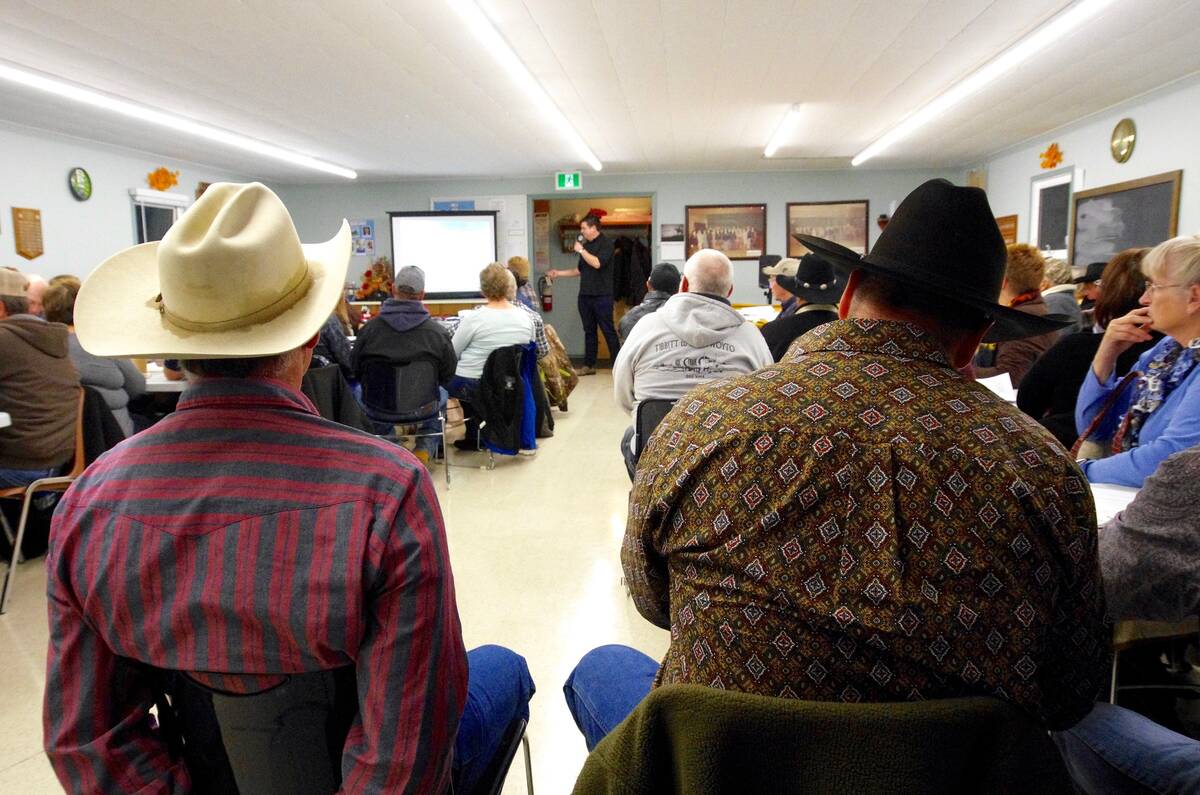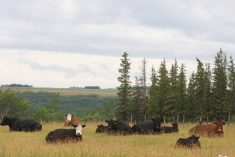Do we need animals to produce meat?
If I’d asked that question even a few years ago, everyone in the room would have assumed I either wasn’t the sharpest knife in the drawer, or that I’d been reading too much science fiction and was waiting for the “Star Trek” replicators to become reality.
These days though, it’s a fair question and it is being asked. A recent article in the Financial Post newspaper featured “The End of Meat?” in its title; it painted a challenging picture.
Read Also

Don’t blow off that beef producer meeting
Local veterinarians and livestock experts often speak at beef producer group events. They have good advice for the farmer on vaccines, calving, beef herd management and more.
Some say animal agriculture is too environmentally unfriendly at the scale needed to meet expected demand in the coming decades. By 2050, according to one study, every acre of cropland would have to be used to feed livestock, and still the demand would be unmet. And while worldwide meat consumption is growing, it is shrinking in affluent countries of the western world. In Canada, for example, beef and pork consumption has dropped by one-quarter since 1999.
The article outlined a number of recent developments that should worry animal agriculture. Convincing hamburgers can be made from wheat, coconuts, potatoes and a protein known as heme that’s made from yeast and is said to make meat taste like, well, meat. There is a milk product that’s chemically identical to the real thing, but minus the lactose and cholesterol, slated to hit grocery stores by the end of 2017. A handful of startups is in a race to put the first affordable lab-grown meat into the marketplace.
It might be tempting to simply dismiss these developments as a passing fad. After all, if you lump meat and meat alternatives together, meat replacements, including well-established products like tofu, make up just 0.1 per cent of the market. That’s barely a drop in a 260-million-tonne global market for fresh and processed meat.
I have, on occasion, raised this topic with people involved in animal agriculture. Few seem to take it seriously. Most assume that consumer sentiment will run against this development and that the not-insubstantial “yuck factor” will prevent most from making the switch.
In some ways, it’s an extension of the mindset long held in a lot of corners of the agriculture industry that folks gotta eat, so they’ll eat what they’re given. But this could be a game changer.
Ignoring the manufactured meat phenomenon would be dangerously short sighted because it shows signs of being for real. For example, there’s some real money behind it. Impossible Foods, the company behind the burger with the protein made by yeast, raised US$182 million from the likes of Microsoft’s Bill Gates and Google Ventures. Clearly, some people with forward vision are putting their money where their mouths are and are betting this will be big. Impossible Foods CEO David Lee vows the company does not “… intend to be niche.”
Also consider the issue of animal welfare. Animal industry can argue until the cows come home about the merits of contentious production practices such as sow gestation stalls or battery cages for laying hens, but if the buyers decide to change their terms for buying your product, that pretty much ends the discussion.
It doesn’t matter if there’s a good reason to do something. If it looks bad on video, is posted on the Internet, and gets a million page views in the first 36 hours, it’s just become a black eye for your business. It is your own “yuck factor” and until now, all the business has done is grudgingly make changes, only when forced to by large customers.
So far that strategy has worked as a customer-retention strategy. People really like meat, and only a relative handful of consumers seems to be willing to forgo it or pay a premium for a product raised to a certain standard.
But with a credible alternative on the horizon, the choice may now not be meat or no meat. It could be meat or synthetic meat of one type or another. If these replacement products are convincing enough, and consumers feel there are enough reasons to try them, the fallout could be enormous for agriculture.
More than a third of the U.S. corn crop is fed to livestock, for example. If even 10 per cent of that market disappeared, it would mean hard times for grain growers around the world. And what about all that land unsuitable for annual crop production that is currently used for forage?
Nobody knows for sure whether this push will be successful and even if it is, whether the products will be accepted by the market. Lab-grown meat, for example, may prove a bridge too far for many. Or they could gobble it right up.
One thing that is clear, however, is that we’re well beyond the realm of science fiction here. This is science fact.















